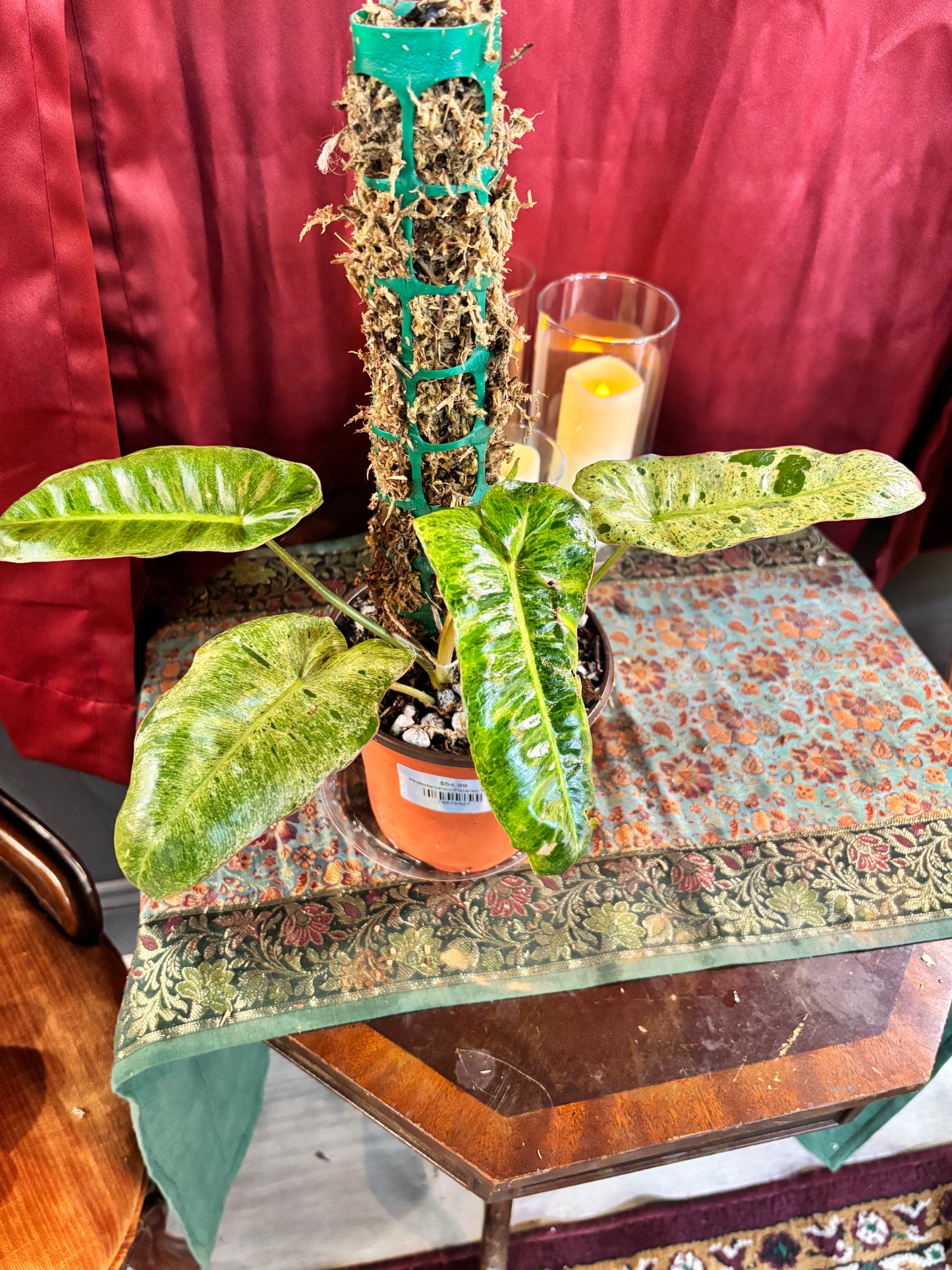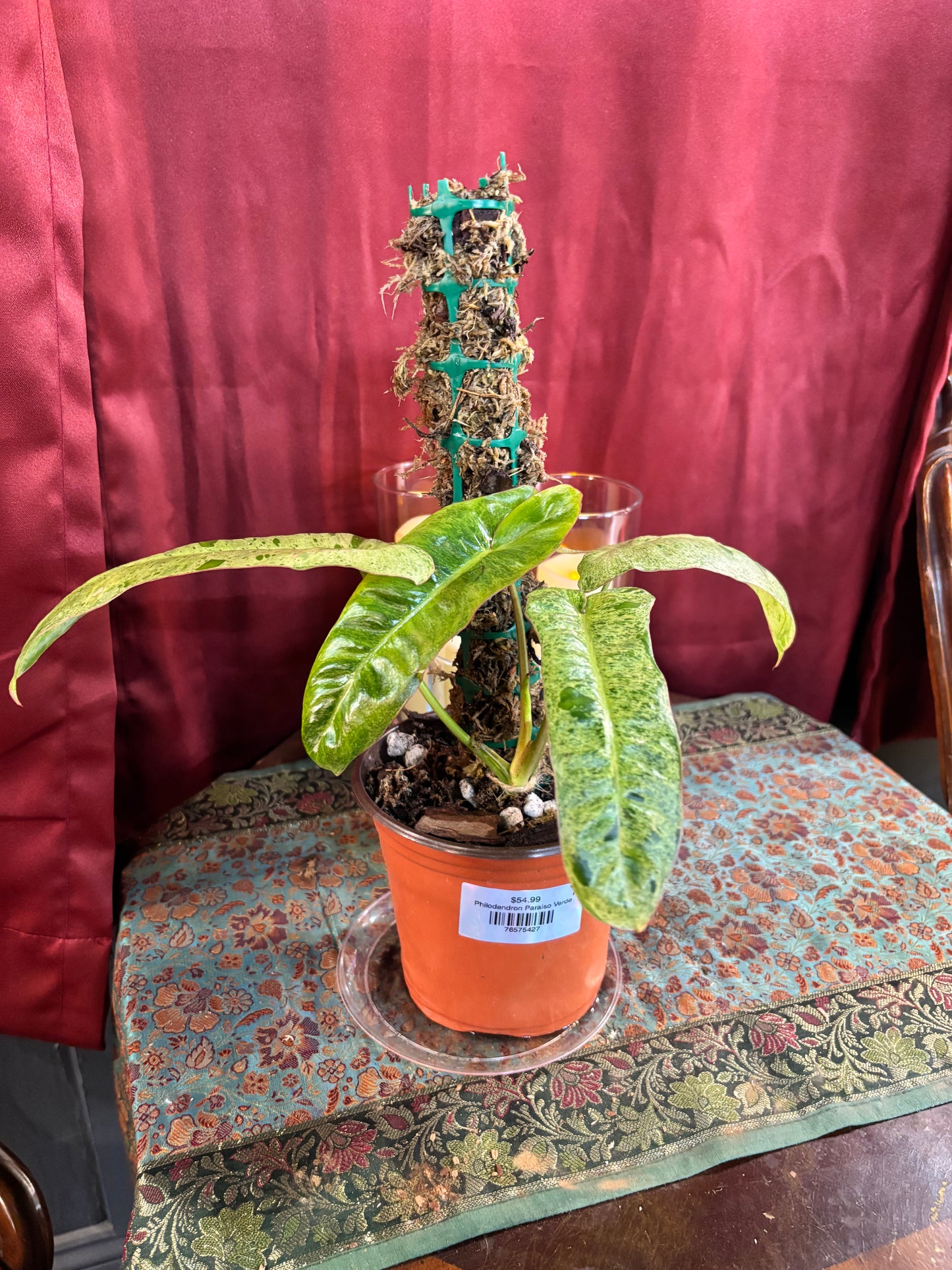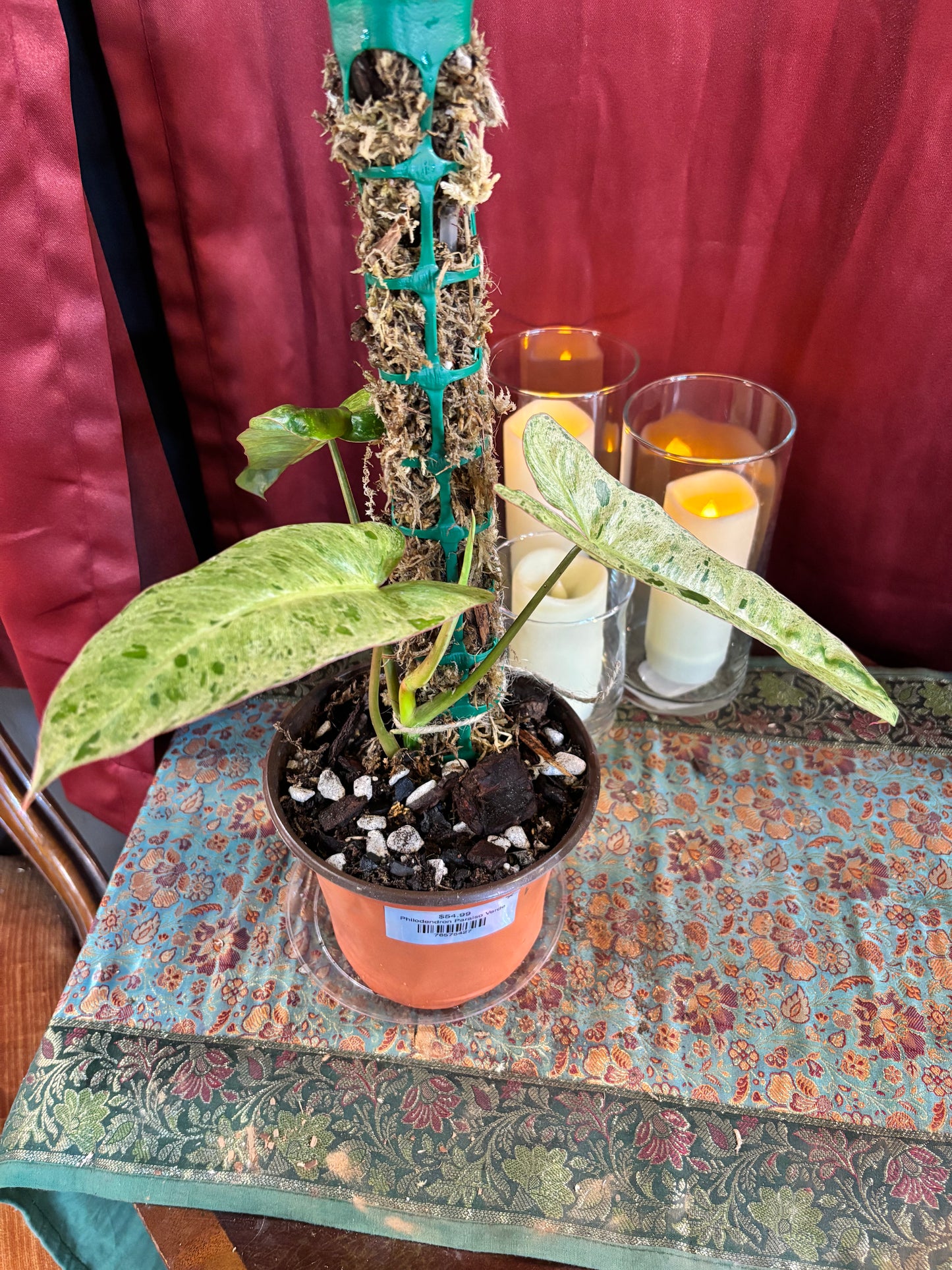Text block
Philodendron Paraiso Verde
Philodendron Paraiso Verde
Couldn't load pickup availability
Share
Temps below 50 deg add Winter Protection!
Philodendron Paraiso Verde: The Lush, Variegated Beauty
Introduction:
The Philodendron Paraiso Verde is a rare, climbing aroid loved for its large, variegated leaves. Its elongated leaves feature a unique marbling of light green, yellow, and creamy tones, often with splashes of dark green. This plant is ideal for collectors who want to add a bold, eye-catching statement to their space. As a climbing plant, it will thrive when given support, such as a moss pole or trellis.
History:
This rare philodendron originates from the tropical rainforests of Central and South America, where it grows as a climbing epiphyte, attaching itself to trees in search of sunlight. It has gained significant popularity among plant collectors due to its rare, highly variable variegation and unique foliage.
Care Outline:
-
Light: Philodendron Paraiso Verde thrives in bright, indirect light. Too much direct sunlight can cause leaf burn, while insufficient light may cause the variegation to fade. Place the plant near a bright window with filtered light for optimal growth and variegation retention.
-
Water: Water the plant when the top 2 inches of soil are dry. This philodendron prefers to be kept evenly moist but not soggy. Avoid letting the plant sit in standing water, as this can lead to root rot.
-
Humidity: Philodendron Paraiso Verde enjoys high humidity levels, ideally around 60%–80%. If grown indoors, increase humidity with a humidifier or misting the plant regularly, especially during dry seasons.
-
Temperature: This plant prefers warm temperatures, ideally between 65°F to 80°F (18°C to 27°C). It should be kept away from cold drafts and temperatures below 50°F (10°C), as it is sensitive to cold.
-
Soil: Use a well-draining aroid mix composed of orchid bark, perlite, and peat moss or coconut coir to mimic the plant’s natural environment. The mix should retain some moisture but allow excess water to drain freely.
-
Fertilizer: Feed the plant every 4–6 weeks during the growing season (spring and summer) with a balanced, water-soluble fertilizer. Reduce feeding in fall and winter when growth slows.
-
Climbing Support: Since Philodendron Paraiso Verde is a climbing plant, it will benefit from a moss pole or trellis to support its growth and allow its leaves to reach their full size.
Light Requirements:
For the best variegation and growth, Philodendron Paraiso Verde needs bright, indirect light. Too much direct sunlight can scorch the delicate variegated leaves, while too little light can cause the plant to lose its striking variegation and revert to green.
- Natural Light: Place the plant near an east-facing or north-facing window where it can receive bright, filtered light throughout the day.
- Artificial Light: If natural light is limited, grow lights can be used to supplement the plant’s light needs, providing 12–14 hours of light per day.
Propagation:
1. Stem Cuttings:
- Best Time: Spring or early summer, during the active growing season.
-
Steps:
- Take a cutting with at least one node and a healthy leaf.
- Place the cutting in water or plant it directly into moist, well-draining soil.
- Keep the cutting in a warm, bright area with high humidity.
- Roots should begin to form in a few weeks. Once the roots are established, transfer the cutting to soil (if it was propagated in water).
Soil for Philodendron Paraiso Verde:
A well-draining, airy potting mix is essential for healthy growth. A good aroid mix for Philodendron Paraiso Verde includes:
- Orchid bark for aeration and drainage.
- Perlite to improve soil structure and prevent compaction.
- Peat moss or coconut coir to retain moisture while providing proper drainage.
This blend will help mimic the plant’s natural epiphytic growing conditions.
Fertilizing:
- Fertilize every 4–6 weeks during the active growing season with a balanced, water-soluble fertilizer.
- Reduce feeding to once every two months in fall and winter when growth naturally slows down.
- Avoid over-fertilizing, as this can cause nutrient burn and harm the plant.
Repotting:
- When to Repot: Repot every 1–2 years, or when the plant outgrows its pot.
- Best Time: Spring is the ideal time to repot, just before the growing season begins.
-
Steps:
- Carefully remove the plant from its pot, being mindful of the roots.
- Repot into a slightly larger pot with fresh, well-draining soil.
- Water thoroughly after repotting and place the plant in bright, indirect light to recover.
Pests and Diseases:
Philodendron Paraiso Verde can be prone to common houseplant pests such as spider mites, mealybugs, and aphids. Regularly check the leaves for signs of infestation, and treat with insecticidal soap or neem oil if pests are found. Ensure proper watering to avoid root rot and fungal infections.








































